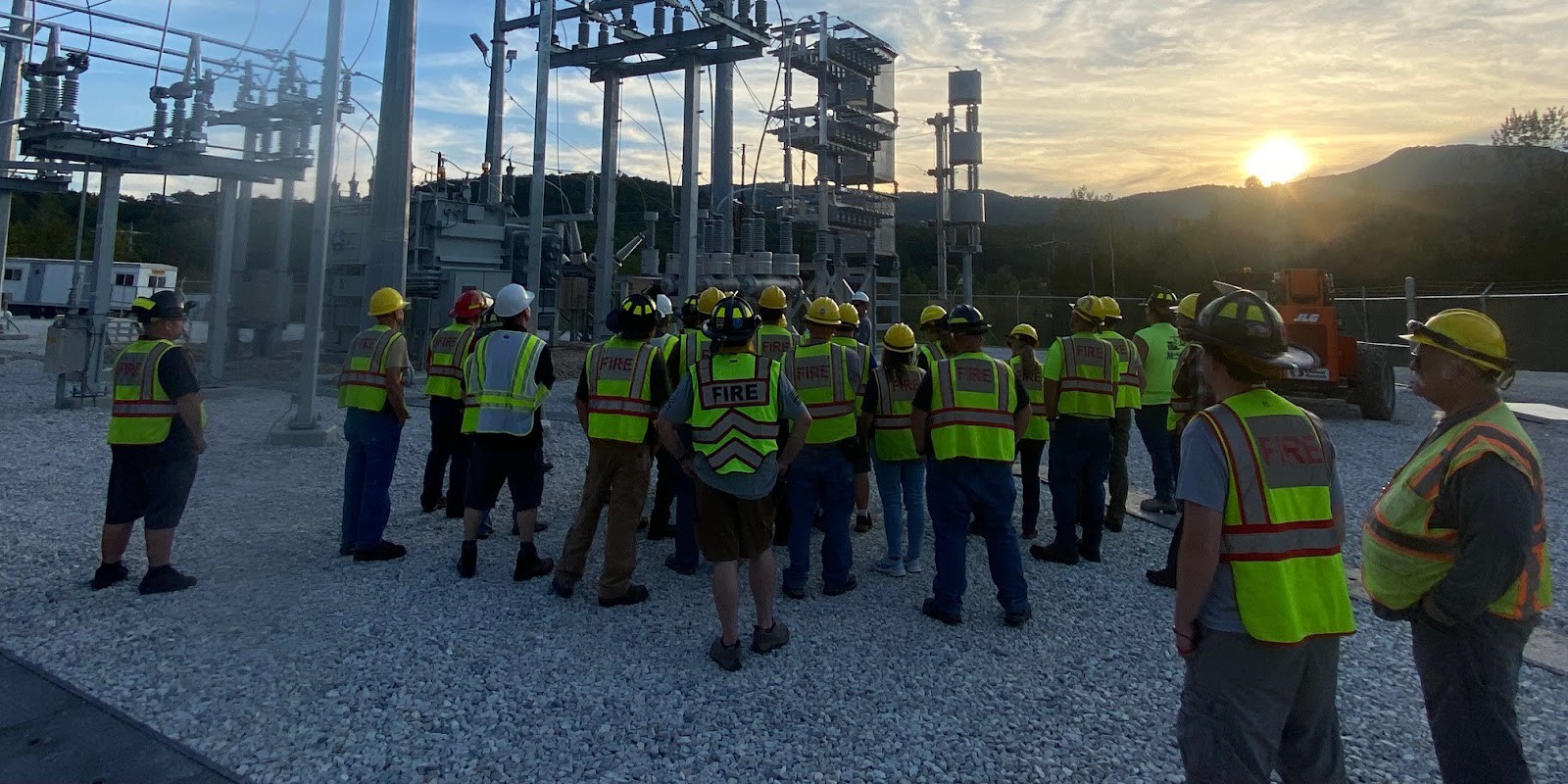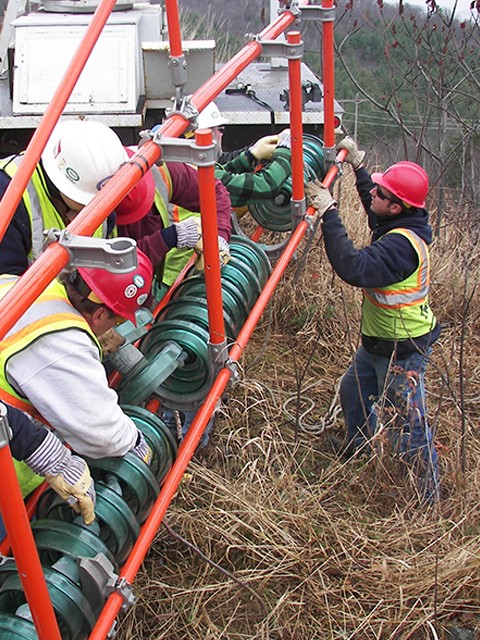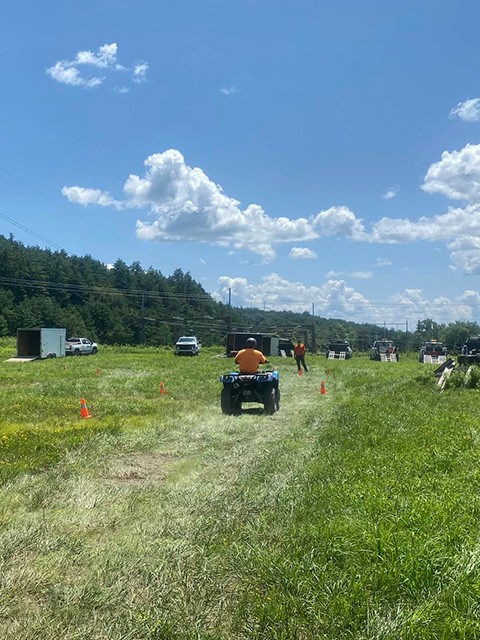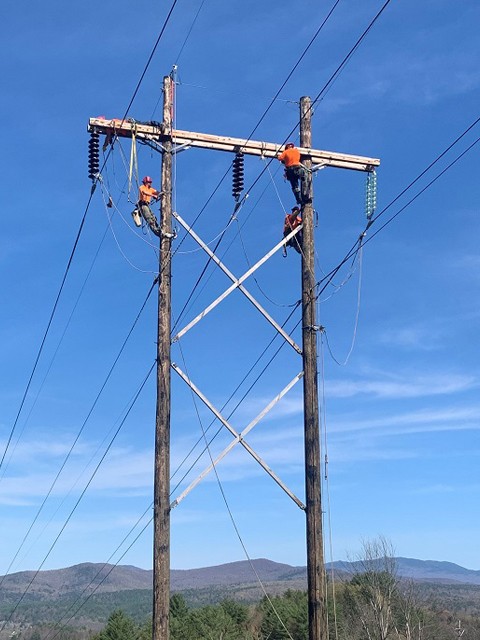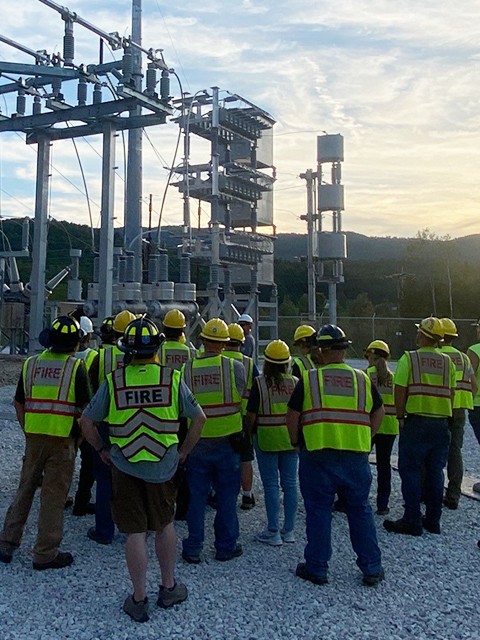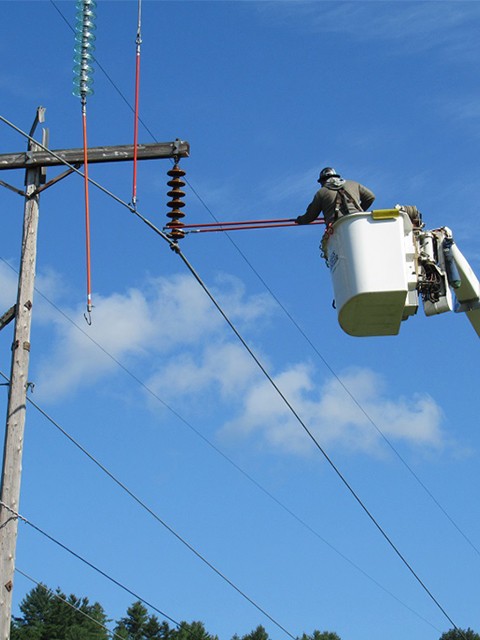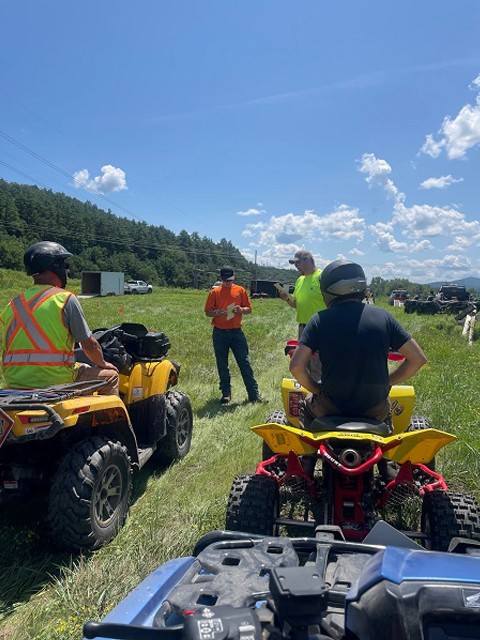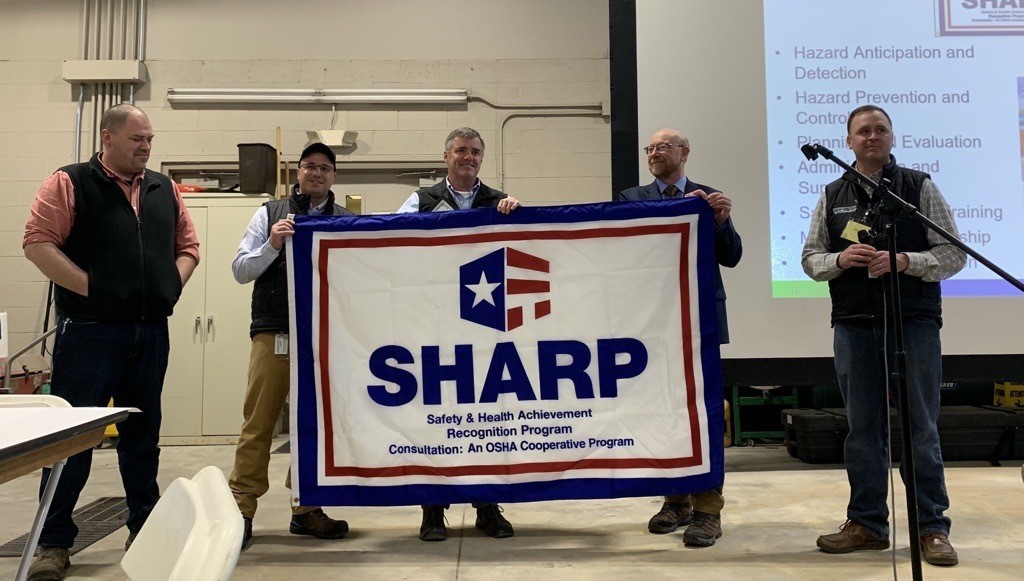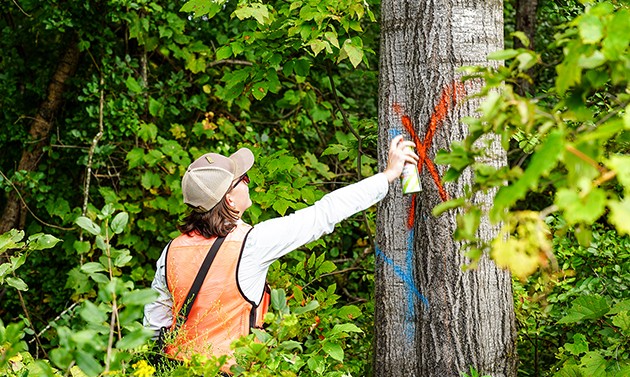VELCO high voltage transmission lines and fiber optics cross many Vermont farms. Our transmission lines meet National Electrical Safety Code clearances designed to protect line workers and the general public, however, farmers still need to exercise precautions when working under and near energized power lines. By making your family and workers aware of potentially dangerous electrical situations, you can help prevent serious injuries or death.
Look up & save your life
First, be aware of your surroundings and the height of your farm equipment when working in the transmission right-of-way (ROW). Unlike the wiring in a home, overhead power lines are not wrapped in electrical insulating material. Electrocution is the most significant risk from contacting or even coming close to a transmission line. Since electricity carried by high-voltage lines can arc across air space, electrical contact between an object on the ground and an energized wire can happen even though the two do not actually touch. Avoid bringing yourself, or any object you are driving or holding, too close to an overhead power line. Even non-metallic materials, such as lumber, tree limbs, tires, ropes, straw and hay, are capable of conducting electricity.
Many agricultural machines are large enough to contact an overhead transmission or fiber optic line, such as, combine harvesters, fork lift trucks, telescopic material handlers, antennas on trucks, self propelled harvesters, crop sprayers, tractors, excavators and diggers. Always lower equipment before you move it, even if you are only moving a few feet. Use caution raising dump trailers and keep truck bodies in a horizontal position when traveling within the ROW. Have someone be a spotter to double check your clearance from a distance away. Remember your visibility to judge distances decreases at dusk.
Crop height
VELCO has acquired easement rights to construct, operate and maintain power lines, and to keep the ROWs clear of all structures, fire hazards, vegetation, and any other use that may pose a safety risk or interfere with the reliability of our transmission system. Although most crops less than 12-feet tall can be grown safely under power lines, owners of established orchards, Christmas tree farms, and trellised crops should contact VELCO to confirm maximum allowable growth heights. If you are considering converting an open field to any one of these uses within a VELCO ROW, you will need to apply for authorization from VELCO’s Real Estate & ROW Department. If approved, you will also need to plan access routes for our crews’ use to perform routine maintenance on the poles and wires without damaging your crops.
Organic farms
Since VELCO’s Vegetation Management program includes, among other things, the selective use of herbicides in certain areas, please notify us if you have or plan to register as an organic farm. If you have questions regarding our use of herbicides as part of our vegetation management program, please contact VELCO.
Shock, water & smoke hazards
Under certain conditions, non-hazardous nuisance shocks can occur when touching metal objects near the transmission line, but away from the high-voltage wires. The shocks are caused by a voltage induced from the transmission lines into nearby metallic objects, like vehicles, fences, metal buildings or roofs, and irrigation systems that are near the line or parallel the line for some distance. The shock can resemble touching the spark-plug ignition wires on your lawnmower or car.
Refueling vehicles is also not allowed on rights-of-way because there is a chance that a spark from an induced voltage could ignite the fuel.
Farming safely around high-voltage electric lines
Electricity can be conducted through water, so never allow an irrigation system to spray a continuous stream onto power lines or pole structures. Position rain and slurry guns so that jets of water or slurry cannot contact the overhead lines when they are in use, and remember, high winds should be taken into account.
Smoke and hot gases from a large fire can create a conductive path for electricity. When a fire is burning under a transmission line, electricity could arc from the wire through the smoke and to the ground, endangering nearby people and objects.
Right-of-way uses & unauthorized encroachments
VELCO will consider landowner requests to use our right-of-way, but only if they do not cause a safety or operational risk. We have developed guidelines for these conditional uses that may be considered and approved by VELCO engineers and managers. Some examples of non-permitted uses in the easement area include, but are not limited to, buildings, swimming pools, signs, grade changes, drainage ditches, slurry ponds, storage buildings, and fences or walls that might unreasonably obstruct our access, or pose a safety risk. For more information, visit www.velco.com/real-estate-and-right-of-way.
General safety
For your safety, do not fly kites or model airplanes near the ROW, do not climb or attach anything to transmission poles, never touch a fallen wire, never shoot at transmission facilities—gunshot can cause flashovers or may cause the wire to fall to the ground and is a violation of federal law. Please help us keep our rights-of-way safe, and our service reliable by reporting any unusual activity or condition.
Make sure everyone on your farm knows what to do in the event of an emergency. If equipment you are operating contacts the transmission line, do NOT get off the machinery unless you are in immediate danger. Call 911 and VELCO immediately. Electrocution is possible if anyone touches both the machine and the ground at the same time. If you must leave the equipment, land with feet together and arms close to your body. Keep your feet touching each other and shuffle away from the machinery or fallen wire – do not run. Do not go back for any reason until VELCO has informed you that the area is safe.
If you have damaged a guy wire, pole or any buried wires, please call VELCO immediately so we can reinstall the wires.
For more information on power line safety, or to report an unusual condition or suspicious activity, please contact VELCO at 802.770.6357.

